MATLAB自动驾驶工具箱的简单使用
自动驾驶工具箱的简单使用
文章目录1. 开环场景1.1 场景的建立与使用1.2 使用现有场景2. 闭环场景3.使用UNREAL 4引擎进行SCENARIO SIMULATION
文章目录
1. 开环场景
开环场景
1.1 场景的建立与使用
场景的建立与使用
drivingScenarioDesigner
输入命令,打开场景编辑器
随便加入一些道路和车辆
加入车辆行驶路径点,并加入一台camera
�
导出到SIMULINK,自动生成slx与mat文件
SCENARIO模块输出的车辆数据格式如下,可用Bus模块分解,也可作为结构体使用matlab function 解码
�
1.2 使用现有场景
使用现有场景
如图所示,matlab附带众多标准化的试验场景
2. 闭环场景
闭环场景
与开环场景类似,
SIMULINK中设置如下
�
数据打包如下
function egoActor = packEgo(pos,vel,yaw,yawRate)
% Pack ego information into a single ego actor bus
%
% Imoprtant note:
% Output is a bus of type BusActorsActors. This is the same bus used by the
% Scenario Reader to output an individual actor. If you change the
% output bus name of Scenario Reader, change the output bus name here
% as well by clicking on 'Edit Data' in the menu above.
egoActor = struct(...
'ActorID',2,...
'Position', [pos(1) pos(2) 0], ...
'Velocity', [vel(1) vel(2) 0], ...
'Roll', 0, ...
'Pitch', 0, ...
'Yaw', yaw, ...
'AngularVelocity', [0 0 yawRate]);
3.使用使用UNREAL 4引擎进行
引擎进行SCENARIO SIMULATION
参照MATLAB2019B中自带的例子
�
作者:你看不见我写的blog
�
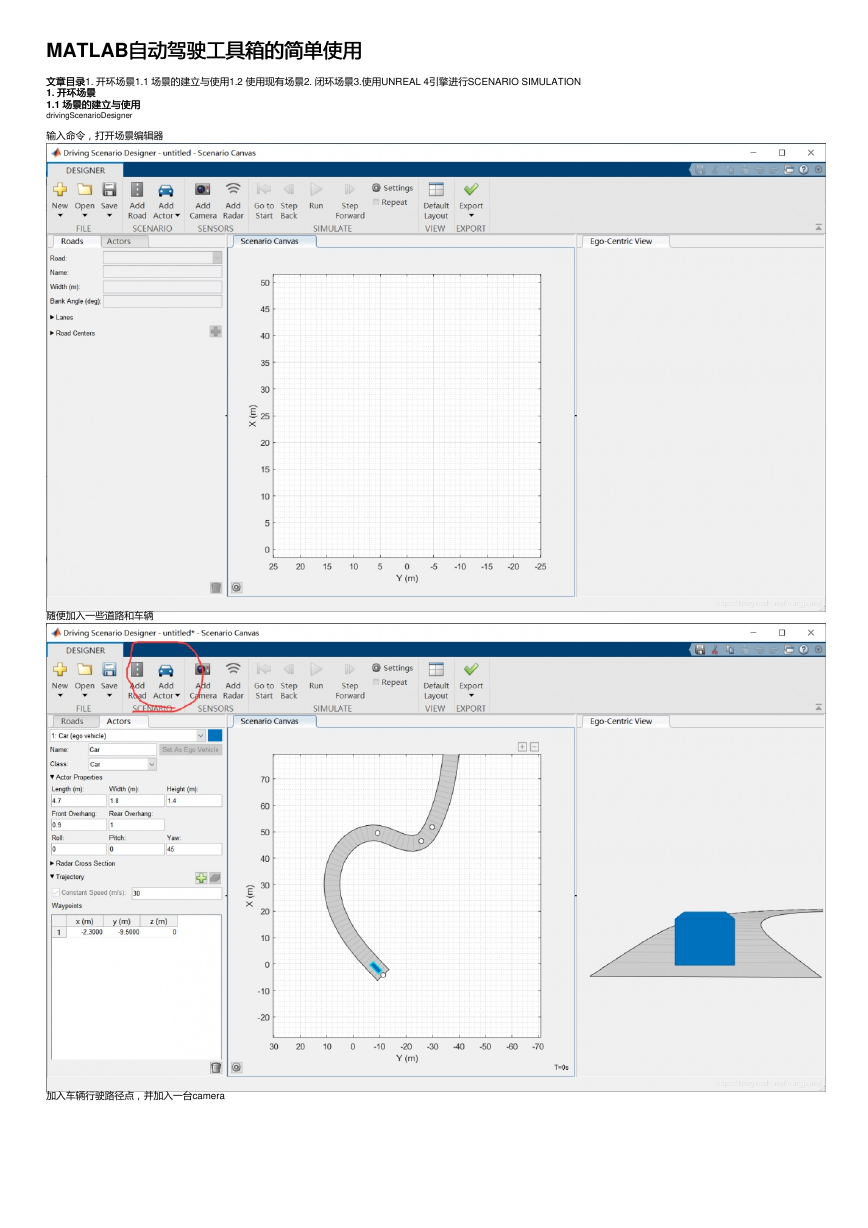
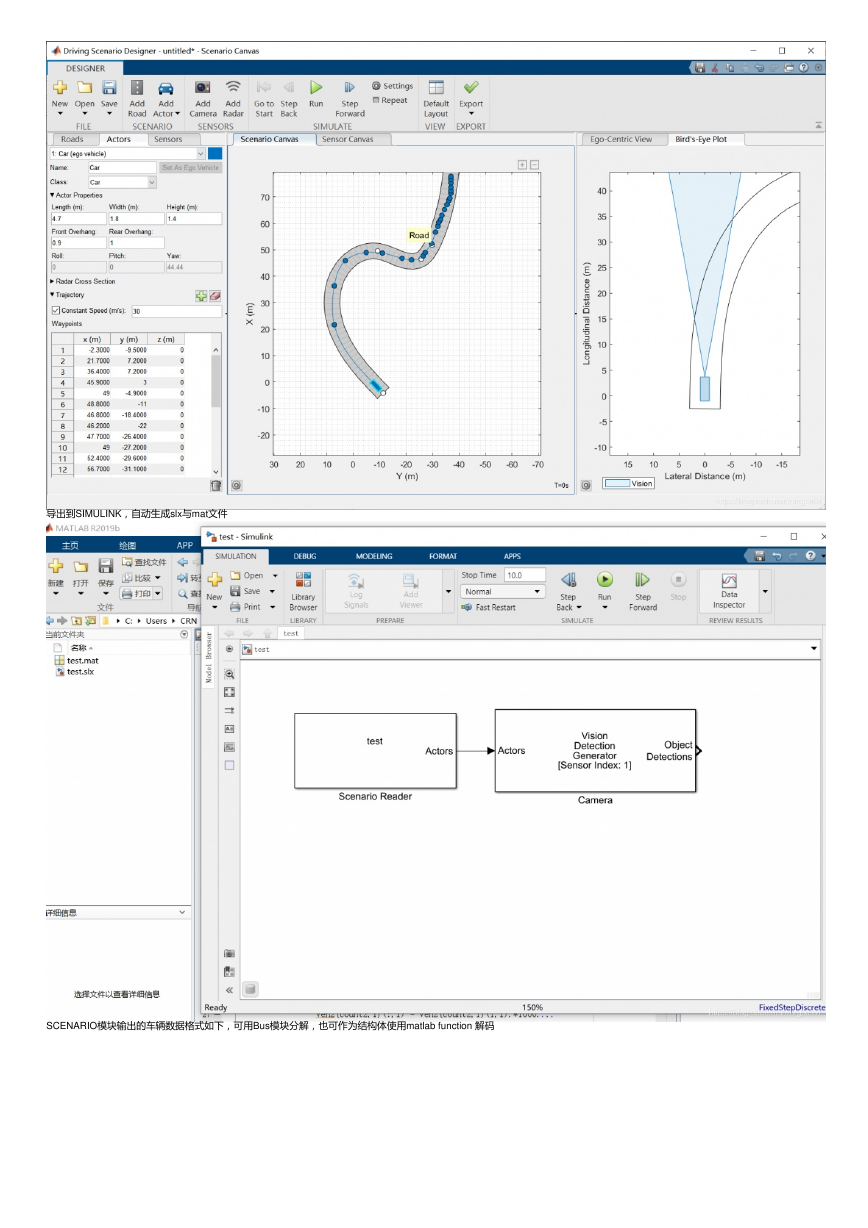
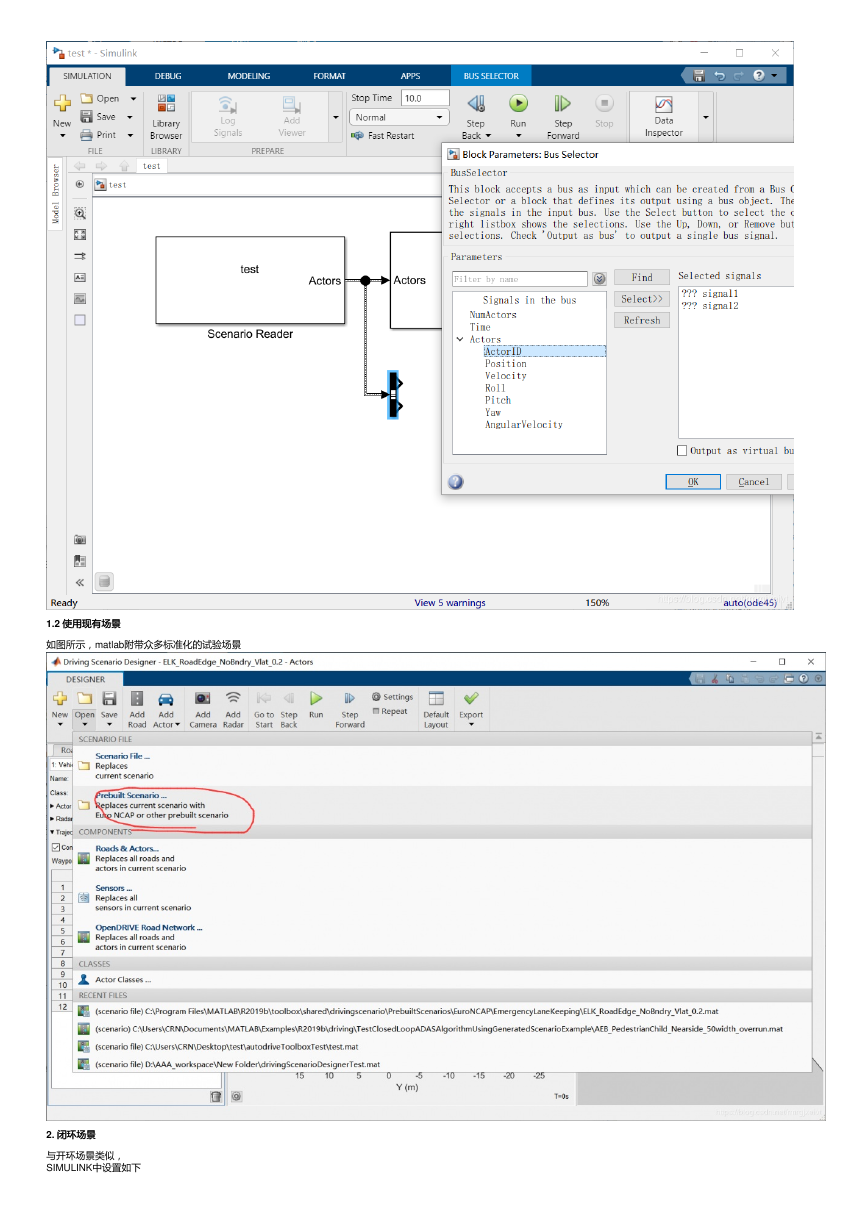
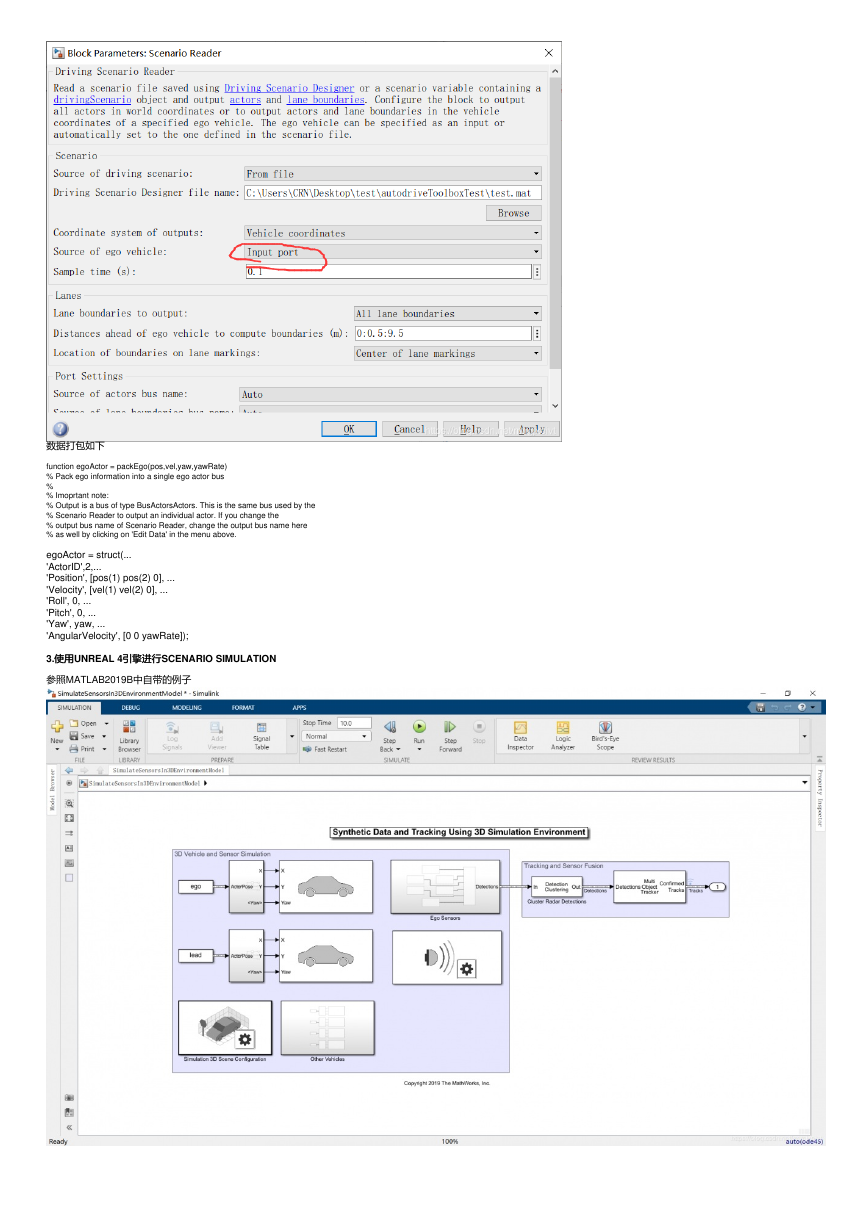
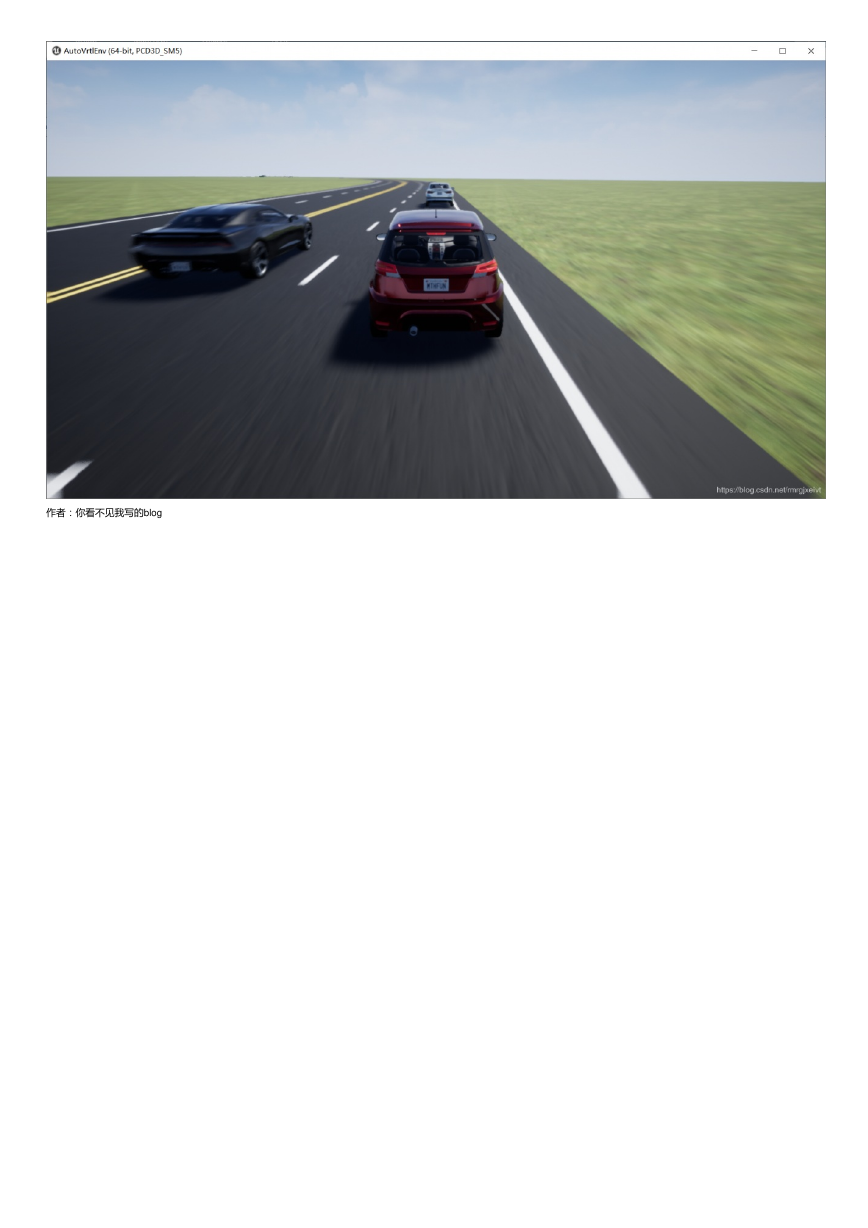





 2023年江西萍乡中考道德与法治真题及答案.doc
2023年江西萍乡中考道德与法治真题及答案.doc 2012年重庆南川中考生物真题及答案.doc
2012年重庆南川中考生物真题及答案.doc 2013年江西师范大学地理学综合及文艺理论基础考研真题.doc
2013年江西师范大学地理学综合及文艺理论基础考研真题.doc 2020年四川甘孜小升初语文真题及答案I卷.doc
2020年四川甘孜小升初语文真题及答案I卷.doc 2020年注册岩土工程师专业基础考试真题及答案.doc
2020年注册岩土工程师专业基础考试真题及答案.doc 2023-2024学年福建省厦门市九年级上学期数学月考试题及答案.doc
2023-2024学年福建省厦门市九年级上学期数学月考试题及答案.doc 2021-2022学年辽宁省沈阳市大东区九年级上学期语文期末试题及答案.doc
2021-2022学年辽宁省沈阳市大东区九年级上学期语文期末试题及答案.doc 2022-2023学年北京东城区初三第一学期物理期末试卷及答案.doc
2022-2023学年北京东城区初三第一学期物理期末试卷及答案.doc 2018上半年江西教师资格初中地理学科知识与教学能力真题及答案.doc
2018上半年江西教师资格初中地理学科知识与教学能力真题及答案.doc 2012年河北国家公务员申论考试真题及答案-省级.doc
2012年河北国家公务员申论考试真题及答案-省级.doc 2020-2021学年江苏省扬州市江都区邵樊片九年级上学期数学第一次质量检测试题及答案.doc
2020-2021学年江苏省扬州市江都区邵樊片九年级上学期数学第一次质量检测试题及答案.doc 2022下半年黑龙江教师资格证中学综合素质真题及答案.doc
2022下半年黑龙江教师资格证中学综合素质真题及答案.doc